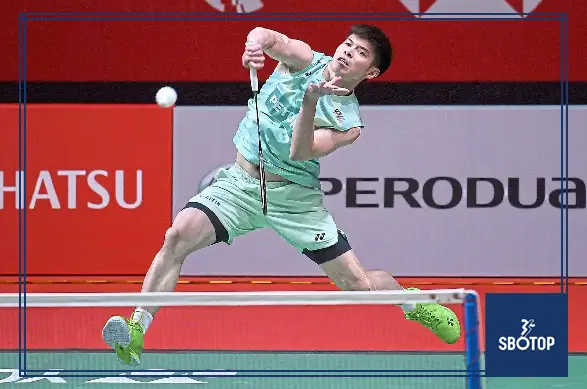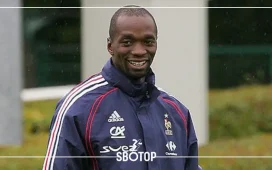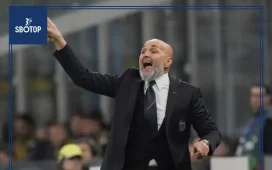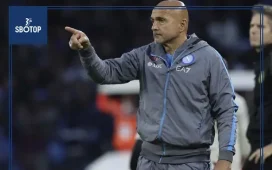In the competitive world of professional badminton, narratives often define players as much as their statistics. Some are known as champions, others as rising stars, and a few are labeled by their remarkable ability to topple higher-ranked opponents against the odds. Lee Jun Hao of Malaysia has long carried the moniker of a “giantkiller,” a term both flattering and limiting. It signifies his ability to spring surprises, yet it also implies inconsistency, suggesting he thrives more on isolated upsets than sustained dominance.
As Jun Hao approaches the next phase of his career, questions inevitably arise: Can he evolve beyond the tag of a giantkiller? Can he transform himself from a player known for occasional shocks into a regular contender at the highest levels of world badminton? To answer these questions, one must explore his journey so far, the challenges he faces, and the roadmap that could redefine his future.
Early Promise From Junior Champion to Senior Aspirant
Lee Jun Hao first came into the spotlight in 2017 when he claimed the Asian Junior Championships men’s singles title, a victory that stamped his name among Malaysia’s most promising prospects. His run during that tournament showcased the classic attributes of his game: smooth footwork, sharp placement, and a knack for reading opponents.
Malaysia has always harbored high hopes for its junior champions. The legacy of Lee Chong Wei, who carried Malaysian badminton for more than a decade, created a cultural expectation that each new talent might be the “next great hope.” In Jun Hao’s case, his early results suggested he might follow that path. He transitioned into the senior circuit with optimism, eager to test himself against the best in the world.
However, as with many young shuttlers, the step up to senior competition revealed a harsh reality: consistency is often more difficult than brilliance.
The Giantkiller Reputation
Jun Hao’s career to date has been punctuated by surprise wins against higher-ranked or more established opponents. These moments captured attention, giving him the reputation of a player who could never be underestimated. For instance, he has notched victories against seasoned campaigners who, on paper, should have swept him aside with relative ease. The badminton world loves an underdog story, and Jun Hao provided plenty of those. Yet, the very label of “giantkiller” comes with a double edge. It suggests:
- Unpredictability – He can beat strong opponents but may struggle against peers or lower-ranked players.
- Lack of Consistency – His results often swing between brilliance and mediocrity.
- Incomplete Development – He has the weapons to upset but not necessarily the arsenal to dominate.
Thus, while the giantkiller tag earned him attention, it also limited the perception of his long-term potential. For Jun Hao, the time has come to shed this narrative and aim higher.
Strengths That Define Jun Hao
To understand how Jun Hao can move forward, it is essential to recognize his strengths:
- Fluid Movement: One of his standout qualities is his smooth footwork, enabling him to cover the court efficiently. His ability to transition from defense to attack has been a hallmark since his junior days.
- Shot Variety: Jun Hao’s deception and shot-making give him an edge in rallies. He can unsettle opponents with clever changes in pace and placement.
- Mental Resilience in Big Matches: His giantkiller reputation is partly owed to his ability to rise on big occasions. Against elite players, he often plays with greater freedom and belief.
These strengths form the bedrock upon which he can build his next chapter.
The Challenges He Must Overcome
While Jun Hao’s talent is evident, several recurring issues have prevented him from breaking into the world’s top tier:
- Physical Endurance
The demands of the senior circuit are immense. Long rallies, grueling three-game matches, and back-to-back tournaments test a player’s stamina. At times, Jun Hao has struggled to maintain intensity deep into matches. - Consistency in Execution
Beating top players requires exceptional execution, but sustaining those levels week after week separates contenders from outsiders. Jun Hao’s inconsistency has often seen him exit early in tournaments despite flashes of brilliance. - Psychological Pressure
Carrying the expectations of Malaysian badminton fans is no easy task. Comparisons with Lee Chong Wei linger, and the media spotlight can weigh heavily on younger players. Finding a way to thrive under that pressure is crucial. - Closing Out Matches
On several occasions, Jun Hao has found himself in winning positions against strong opponents, only to falter in the decisive stages. The ability to close out matches is often what transforms players into champions.
Lessons from Other Players Who Outgrew Labels
The trajectory Jun Hao seeks to follow is not unprecedented. Several players have moved past limiting labels to redefine themselves as world-class contenders:
- Kidambi Srikanth (India): Once considered an inconsistent player, Srikanth transformed himself into a top contender by winning multiple Superseries titles in 2017.
- Anders Antonsen (Denmark): Initially dismissed as talented but erratic, Antonsen matured into one of Denmark’s most reliable singles players, competing in World Championship finals.
- Kento Momota (Japan): While always a prodigy, Momota endured setbacks before reinventing himself into a dominant force, achieving world number one status.
These stories demonstrate that labels can be transcended. For Jun Hao, the path requires patience, refinement, and belief.
The Malaysian Context Opportunities and Pressures
Malaysia’s badminton ecosystem provides both opportunities and challenges. On the one hand, players receive strong institutional support, exposure to international competition, and access to experienced coaches. On the other, the weight of expectations is immense.
Every Malaysian singles player is inevitably compared to Lee Chong Wei, who set a standard of consistency and excellence that is almost impossible to replicate. While comparisons can be unfair, they shape public discourse. For Jun Hao, carving out his unique identity is essential. He must not only focus on results but also on developing a style and brand that is distinctly his own.
Moving Beyond the Giantkiller Tag
So, what does it mean for Jun Hao to move beyond the giantkiller tag? It means shifting from being a player who shocks occasionally to one who competes regularly in the later rounds of major tournaments. It means transforming from an underdog into a genuine contender.
To achieve this, several strategies are vital:
- Building Physical Robustness
Jun Hao must continue strengthening his endurance and physical conditioning. A fitter Jun Hao can sustain intensity across long matches and tournament stretches. - Strategic Consistency
Developing a more reliable “Plan B” when initial tactics fail is crucial. Too often, giantkillers rely on perfect execution of a single strategy. Champions adapt and adjust. - Sports Psychology Training
Working with sports psychologists can help him manage pressure, maintain composure, and build the mental toughness needed to finish matches strongly. - Targeted Tournament Planning
Carefully choosing tournaments to build ranking points and confidence is essential. Regular exposure to higher-tier events sharpens competitive instincts. - Learning from Mentors
Seeking guidance from legends like Lee Chong Wei, or contemporary peers like Lee Zii Jia, could accelerate his growth. Experience shared by those who’ve navigated similar paths is invaluable.
Signs of Progress
In recent months, there have been signs that Jun Hao is ready to take the next step. His performances in regional tournaments have grown steadier, and his ranking trajectory shows incremental improvement. Coaches have also highlighted his growing maturity, not only on the court but also in handling off-court responsibilities.
Moreover, his body language during matches suggests greater confidence. Where once he seemed overwhelmed in closing stages, now he appears more focused, more deliberate in shot selection. These subtle shifts often mark the beginning of transformation.
Also Read:








